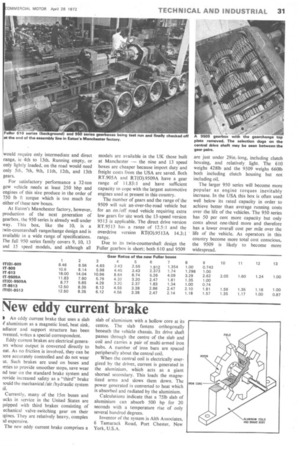New eddy current brake
Page 33

If you've noticed an error in this article please click here to report it so we can fix it.
An eddy current brake that uses a slab aluminium as a magnetic load, heat sink, adiator and support structure has been wented, writes a special correspondent.
Eddy current brakes are electrical genera)rs whose output is converted directly to eat. As no friction is involved, they can be tore accurately controlled and do not wear ut. Such brakes are used on buses and irries to provide smoother stops, save wear nd tear on the standard brake System and rovide increased safety as a "third" brake tould the mechanical /air /hydraulic system Currently, many of the 15m buses and ucks in service in the United States are pipped with third brakes consisting of echanical valve-switching gear on their igines. They are relatively heavy, complex id expensive.
The new eddy current brake comprises a slab of aluminium with a hollow core at its centre. The slab fastens orthogonally beneath the vehicle chassis. Its drive shaft passes through the centre of the slab and coil and carries a pair of multi-armed iron hubs. A number of iron bars are spaced peripherally about the central coil.
When the central coil is electrically energized by the driver, current is generated in the aluminium, which acts as a giant shorted secondary. This loads the magnetized arms and slows them down. The power generated is converted to heat which is absorbed and radiated by the aluminium.
Calculations indicate that a 751b slab of aluminium can absorb 500 hp for 20 seconds with a temperature rise of only several hundred degrees.
Inventor of the system is Alth Associates, 6 Tamarack Road, Port Chester, New York, U.S.A.








































































































